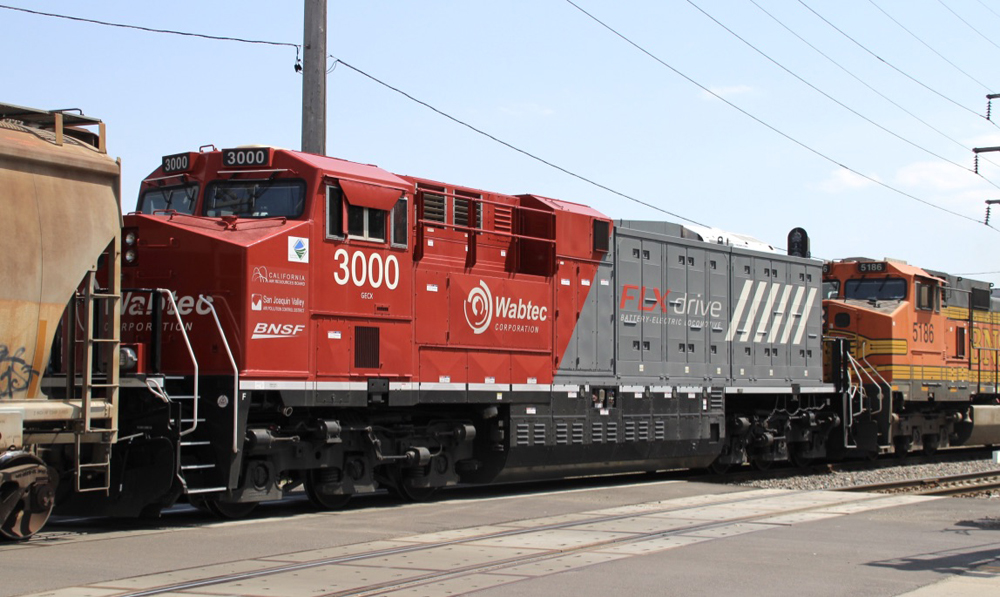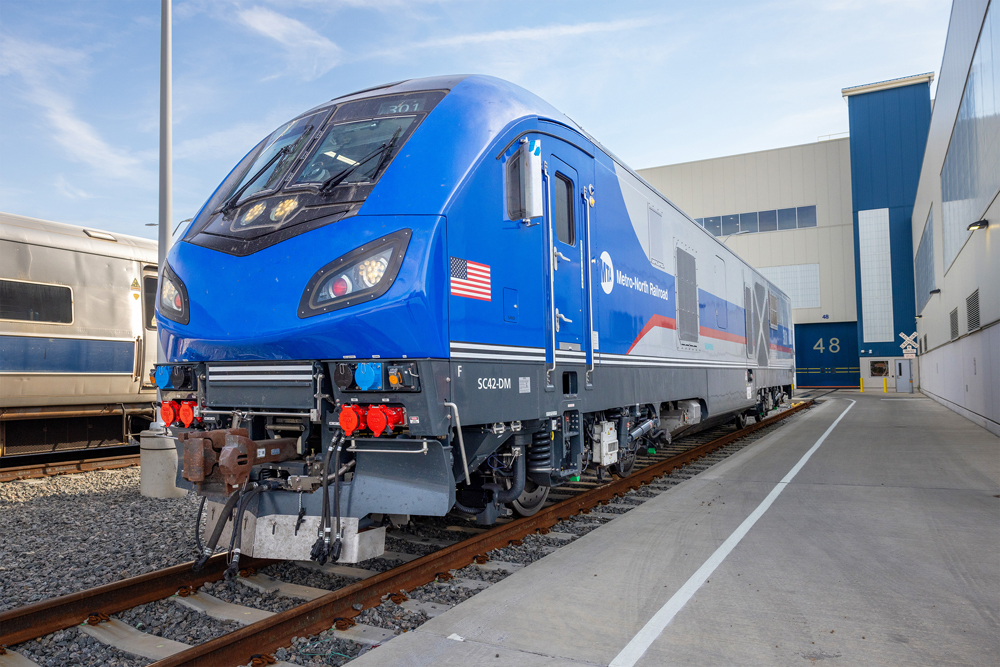
PITTSBURGH — Wabtec has secured its largest order to date for its FLXdrive battery-electric locomotives, with Australian mining company Rio Tinto ordering four of the units for use in the Pilbara region of Western Australia. The locomotives will help Rio Tinto’s effort to reach a 50% reduction in Scope 1 and 2 carbon emissions by 2030.
“Our partnership with Wabtec is an investment in innovation and an acknowledgment of the need to increase the pace of our decarbonization efforts,” Richard Cohen, Rio Tinto Iron Ore managing director of port, rail and core services, said in a press release.
The locomotives, each with a capacity of 7 megawatt-hours, are projected to reduce fuel costs and emissions per train by 10% or more. The units are slated for delivery in 2023 and will be used in yard and mainline service. The company’s mainline operations currently involve three diesels pulling 240 cars and about 28,000 tons of iron ore. The addition of the FLXdrive locomotives will create a hybrid locomotive consist, with Wabtec’s energy-management software determining when to discharge and recharge the batteries for the most fuel-efficient operation of the consist.
“The FLXdrive is ideally suited to support Rio Tinto’s sustainability targets for their Pilbara system,” said Rogerio Mendonca, President of Freight Equipment for Wabtec. “This locomotive provides the tractive effort, fuel savings, and emissions reductions to cost-effectively run rail networks in the mining industry.”
The Pilbara railroad of another mining operation, Roy Hill, became the first customer for the next-generation FLXdrive locomotive when it ordered a locomotive last September [see “Australian mining firm is first buyer …,” Trains News Wire, Sept. 13, 2021]. Canadian National became the first North American customer in November [see “CN to purchase Wabtec battery-electric locomotive,” News Wire, Nov. 4, 2021].














These units, which can provide up to 4,400 HP in bursts up to about a half-hour duration, are only designed to “recharge during the trip through regenerative braking and at charging stations”. Wouldn’t a true “hybrid” locomotive set use excess diesel-electric capacity to also recharge the batteries?
If you don’t have enough downgrade to charge the batteries, and if your trip times far exceed the battery charge, doesn’t this set up just result in lugging around a dead locomotive most of the time?
– Ed Kyle
I’m also wondering the same Ed.
Or is it more the need for the required HP to get the train moving from a standstill as well as gentle uphill grades and then not required once things are rolling along? Once rolling, yes an extra couple hundred tons but no big deal and regenerative braking keeps charging for the next required spurt of extra horsepower.
Sort of explains why the ore haulers are jumping on board as well as the loads generally going downgrade to port.
It seems like a battery-electric locomotive could replace an existing diesel locomotive in an existing 3 or 4 locomotive consist if one less locomotive could handle the train on flat stretches and the replaced locomotive is only required for uphill grades and can be recharged by dynamic braking on the downhill grades.
For some roads, the appeal would be that of a relative short uphill empties run to the mines, with battery regeneration helping out downhill to the port.
First an Australian ore mining firm, then Canadian National for their B&LE line, and now another Australian mining firm. What is it with ore roads and the FLXdrive?